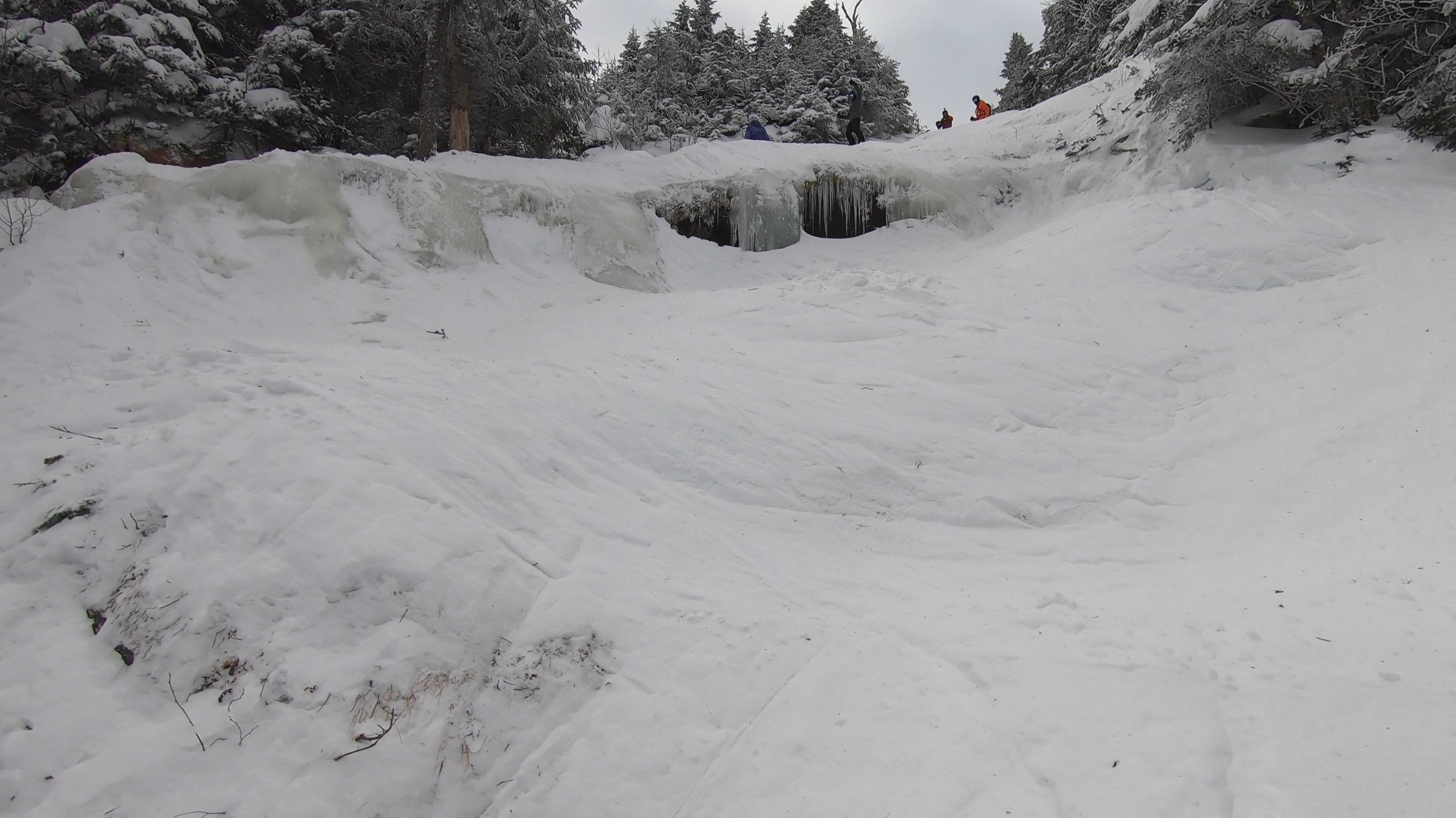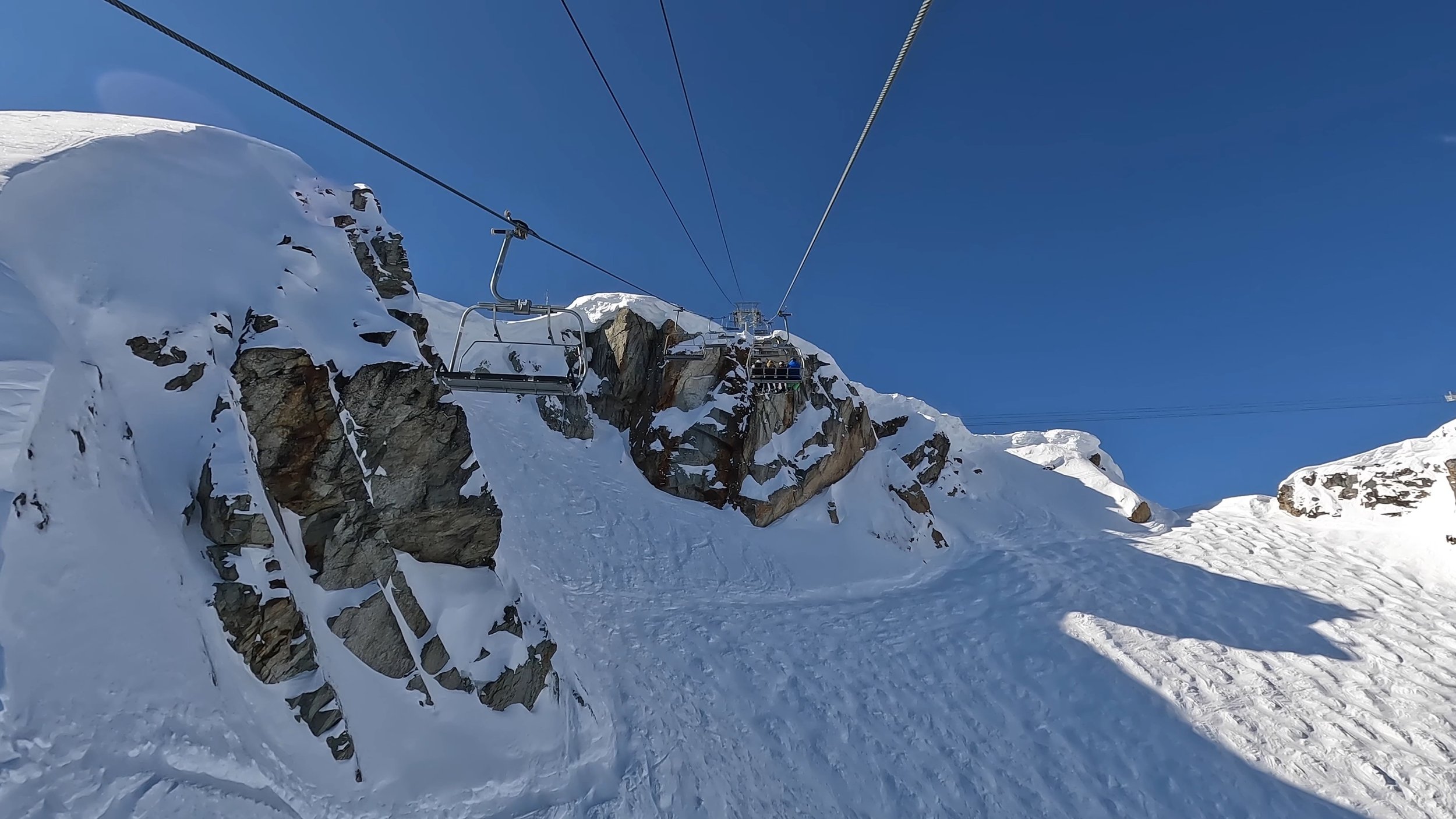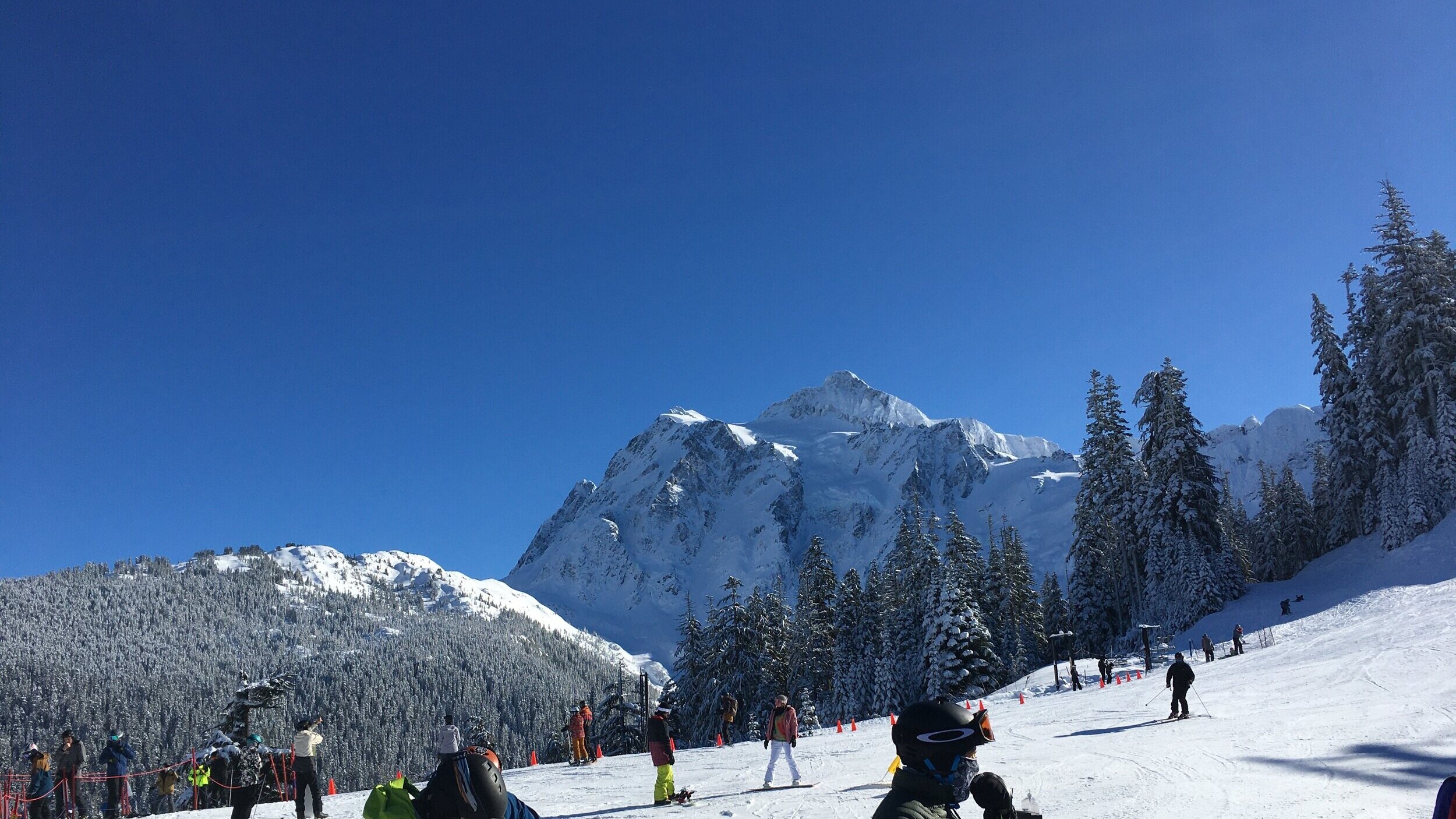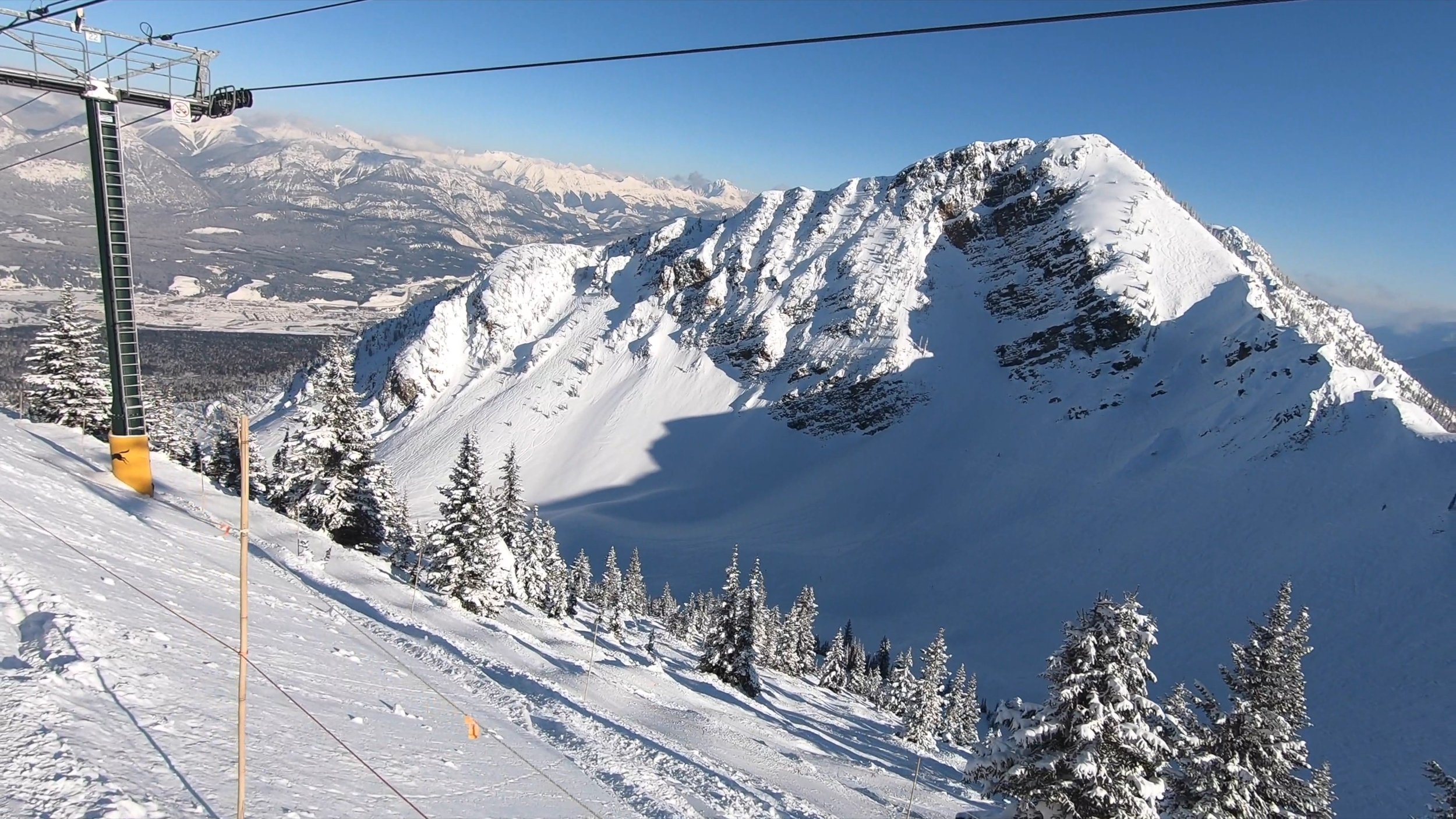The Most Challenging Ski Resorts in North America
When it comes to expert ski terrain, you typically think of steep, bumpy slopes with maybe a few obstacles thrown in. But North America’s most extreme resorts will turn your idea of what a physical trail can be upside down—and at times will be so confounding, you might wonder how some of the runs even earned trail designations in the first place.
So of the hundreds of ski resorts that advertise expert and extreme terrain, which ones are truly the hardest?
In this piece, we’ll share our picks for the ten most challenging ski resorts in North America. We’ll discuss what makes each of these mountains especially stand out in the difficulty department, and while we’ll caveat there’s inevitably some level of subjectivity given how comparable all these resorts are, we’ll make the case for why we put them in the order we did.
#10: Mad River Glen
First up on this list we have our pick for toughest ski resort in the East, Mad River Glen. This skier-only Vermont resort doesn’t have the largest footprint or highest vertical drop, but there’s no better embodiment of the toughest terrain the East Coast has to offer.
Mad River Glen already comes with the narrow, bumpy, and icy slopes that the East Coast is known for. But where the resort really stands out for the pack is in its sheer rawness, with very little grooming, almost no snowmaking, and a setup where pretty much any area—even off of the marked trails—is fair game for skiing. Natural obstacles aren’t out of the question elsewhere on the perennially-thin-cover East Coast, but with Mad River Glen, you should expect rocks, tree stumps, bare ground—and even frozen waterfalls. These obstacles may not look as flashy as the extremes out west, but they combine to create conditions that require perfect technical precision or mandatory drops to get out of.
One could argue that other Northeast mountains like Jay Peak or Whiteface may hold their own or even beat Mad River Glen in challenge. However, Mad River really stands out in that you can run into its most trying obstacles off multiple terrain pods at pretty much any elevation, whereas at these other resorts, you’re generally safe unless you stick to specific parts of the mountain.
Ultimately, if you want to push yourself to the limit on dirt and ice, live in the Northeast and don’t want to get on a plane, and aren’t a snowboarder, there’s no better place than Mad River Glen.
#9: Crested Butte
Next up, we have the toughest overall traditional ski resort in Colorado, Crested Butte.
With over 40% of its trails rated as double-black diamonds, this southern Colorado mountain already talks a big game on paper. But the resort’s expert-rated trails earn their designation, calling home to profoundly difficult extreme terrain, including narrow chutes, mandatory cliff drops with significant descents and difficult landings, and perilously pitched mountain faces that will send you tumbling for hundreds of feet with one wrong move.
Crested Butte also doesn’t see quite as much snowfall on average as the resorts further north in the state, meaning it takes longer for terrain to fill in, and the resort’s expert offerings may not be open if you visit in the earlier months of the season. But this circumstance serves to make the resort’s extremes even tougher when they do open, with exposed rocks, tree stumps, and thin cover on top of the other obstacles we already mentioned. In fact, Crested Butte hasn’t bothered to do tree clearing in years on its Rambo run—which has become notorious for being the steepest man-made run in North America—meaning you’ll now be navigating small shrubs on that run in addition to the tantalizing 55-degree pitch that made the run famous.
Ultimately, some of the other resorts on this list offer larger vertical drops and more jarring big-mountain facades. But Crested Butte especially stands out for its rock-riddled challenges, and guests can still find themselves in plenty of incredibly dire situations directly off the lifts. If you make it to Crested Butte and want to take advantage of the whole footprint, be sure to take your rock skis with you.
#8: Revelstoke, BC
Next up on this list we have Revelstoke, a resort that arguably radiates insanity at just a first glance. This Western Canada mountain already boasts the longest vertical drop of any ski resort in North America—5,620 feet when solely considering lift access, and over 6,000 feet when considering hike-to terrain—but across much of that footprint, which, mind you, is only served by six lifts, guests will find some of the gnarliest terrain around.
Profound cliff drops exist across all double-black-diamond-rated trails, and in the case of the expert glades off the gondola, you may not be able to bail from these runs—and, consequently, save yourself from hitting these obstacles—for nearly 3,000 feet. In upper mountain bowls, cliffs still make plenty of appearances, but so do rock-lined chutes and daunting cornices. The hikes provide access to what are probably the toughest lines at the resort, but even directly off the lifts, you can run into extreme situations, including mandatory cliffs or straightlining, with little to no notice.
Revelstoke may not have the same flagrant pucker factor as some of the other resorts further up on this list, but there’s no doubt that the unrelenting obstacles and draining vertical will keep even the most tenured guests occupied for their entire trip. If you plan to visit Revelstoke, be sure to do some cardio exercise beforehand—the last thing you want is to stumble upon one of its cliff drops after losing all your energy on the bumps!
#7: Kirkwood, CA
Next up we move southwest to California’s Tahoe region, where Kirkwood may look unassuming on paper but packs an extraordinary punch.
Kirkwood may only offer a 2,000-foot vertical drop, but the resort’s rock-formed footprint makes for a series of extraordinary chutes, cliffs, and couloirs. The hardest runs are marked with a skull and bones sign, and for good reason—every upper-mountain double-black is crowned by a massive cornice, with drop-ins that can be best described as technical at a minimum, but require either mandatory straightlining or even free falls in the most extreme cases.
But Kirkwood’s extremes aren’t confined to the top of the resort, and guests can run into rock-riddled obstacles with little to no notice halfway down the mountain. And while top-to-bottom runs won’t be the longest in the world, guests will face moguls, glades, and sections of formidable pitches on the way down.
Kirkwood may not be our top choice for an endurance workout, but if you want to force yourself to achieve some of the highest speeds that are physically possible on skis or a snowboard, there are few resorts that can match. Make sure you have an especially sturdy board or pair of skis when you visit—you can rest assured the regular rental equipment won’t be able to handle the resort’s perilous straightlines!
#6: Whistler Blackcomb, BC
Whistler Blackcomb is the biggest ski resort in North America, spanning over 8,000 acres and boasting a mile-long vertical drop. The resort has it all when it comes to ski trails, and that includes some of the most intense terrain on the planet.
A double-black trail sign at Whistler is not to be taken lightly, signifying truly treacherous terrain ahead—even in cases where no hiking is required. Rock-lined chutes and cornices prove extensive across upper-mountain areas, with mandatory air and straightline situations making themselves present across various aspects—and sometimes proving themselves required in tandem. The high-alpine rock formations also make for some extraordinary cliffs, with drops of as much as 60 feet if you find yourself in the right place. The resort’s below-treeline terrain isn’t quite as imposing as its bowls, but there are still plenty of significant cliff drops both directly off marked trails and hidden in the woods if you know where to look.
Whistler Blackcomb doesn’t have the longest endurance runs out there, and despite its tremendous vertical drop, the bottom half of the mountain doesn’t feature much in the way of particularly technical terrain. Still, when it comes to the sheer quantity of extreme chutes and cliffs, this Western Canada destination is really tough to beat.
#5: Palisades Tahoe, CA
Boasting perhaps one of the most iconic facades on this list, Palisades Tahoe has developed quite the reputation over the years for the ferocity of its expert terrain. And we’re glad to report that the resort delivers, featuring lines that not only require the utmost in technical expertise but present challenges that are impressively distinctive in nature.
Across the resort’s extensive footprint, guests can find tantalizingly narrow chutes, daunting cornices, and monumental cliff drops, even directly off the lifts. As one might expect, the toughest runs require what’s basically perfect precision to execute, but what sets Palisades Tahoe apart from the pack is the diversity of challenges scattered across various resort zones, elevations, and terrain types. It’s hard to think of any other ski resort that can boast features quite like the Fingers, a series of extremely narrow, progressively harder chutes that require a combination of jumping and straightlining to get down, the Palisades, a series of hike-to chutes that start with some of the most daunting drop-ins anywhere in the world, and Eagle’s Nest—which is literally just a sheer rock face that only opens when it’s a really good season. And while these might be the most notable examples of Palisades Tahoe’s well-known extremes, there are maybe twice as many lesser-known extreme terrain zones you’ll just have to explore the resort to find for yourself. There are also plenty of traditional expert glades, mogul runs, and bowls.
Palisades Tahoe does see freeze/thaw cycles and snow droughts at times, and during the worst spells, much of its expert terrain may not be open to the public. Additionally, it’s not the tallest resort in the world, so other mountains may be better for prolonged steeps. But if you get to this California resort when the snow is good, there are few other places you can push yourself to the same limit in terms of short spurts of terrain.
#4: Snowbird, UT
If you’ve heard of Snowbird before, you probably know it for the extraordinary quality and quantity of its snowfall. But this unbeatable snow has one additional benefit: it fills in some rather hairy areas and allows the resort to offer unmistakably precarious terrain.
Snowbird is home to some of the wildest chutes on the continent, with tight, demanding pitches often met with mandatory air and unclear landings. And the most intense lines aren’t even that hard to get to, often being accessible directly off the lifts—and thanks to the resort’s favorable snow, they tend to offer unusually reliable opening schedules for terrain of this caliber. If there’s a double-black-diamond sign, even the most capable skiers and riders will want to think twice; some runs with this rating start out with pitches that deceivingly remind of “traditional” expert runs, but filter into the truly dangerous obstacles the resort is notorious for.
Snowbird’s extremes are most easily found off the east side of its iconic Cirque, but there are substantial chutes and cliff drops across the entire resort if you know where to look. In addition, Snowbird’s entire footprint is just plainly steep, creating endurance conditions that just add to the challenge. So don’t let the welcomingly light, dry snow deceive you—Snowbird is top-notch when it comes to terrain technicality, and it’s one of the few places in North America where you might actually be able to take advantage of this strong suit as early as the December holiday period.
#3: Mount Baker, WA
Washington state’s Mount Baker Ski Area may come across as pretty unassuming at first. The resort’s monumental snowfall totals have made headlines over the years, but its modest size and 1,500-foot vertical drop certainly haven’t. However, within the resort’s 650-acre boundaries, visitors will find some of the most profoundly intense ski terrain on the continent.
When you get to Mount Baker, you’ll discover that several skiable areas are marked off as “Extreme Danger Zones”, a rather sensationalized moniker, even in the world of experts-only and double-black-diamond markings. But guests would best heed the resort’s warnings, as the terrain in these areas can become painstakingly difficult. Some trails require legitimate free falls, and others can require straightlines of as much as 100 feet. We’re not even afraid to admit several of these runs are too tough for our team—but if it weren’t for careful scoping when we visited, we might have had to do them anyway, because all obstacles past the Extreme Danger Zone entries are unmarked. If you don’t see tracks in the direction you’re thinking of going, steer clear. It’s also worth calling out the rather comical method of entry to these zones; rather than going through a traditional gate, you have to duck under a specified boundary rope, and while this may feel unintuitive, it’s very much sanctioned by the mountain.
Mount Baker is not a fancy destination resort, and you can’t easily do a weeklong trip there—in fact, the nearest practical lodging can be as far as 45 minutes away. But if adrenaline-pumping slopes are your thing and you’re willing to work to get to the mountain, Mount Baker won’t let you down. It’s also worth noting that Baker offers very easy access to nearby backcountry terrain, so if you bring your beacon and shovel, it might be worth pairing some Extreme Danger Zone laps with a couple of excursions above the resort boundary.
#2: Jackson Hole, WY
Next up we have one of the most notoriously difficult ski resorts out there, Wyoming’s Jackson Hole. The resort sets a serious tone right from the start with a consistently steep 4,000-foot vertical drop, allowing for full top-to-bottom runs exclusively through advanced and expert terrain. This level of sustained pitch is essentially unparalleled elsewhere in North America.
Outside observers often think of Jackson Hole as overrated for challenge thanks to heavy hype surrounding the circumstance we just discussed, and that’s forgivable if you don’t know where to look. But the resort’s toughest double-blacks will truly have you on the edge of your metaphorical seat, with mandatory cliff drops, prolonged straightlining, and tons of natural obstacles. In fact, most of these extremes are directly accessible from the lifts, so if you so desire, you can get yourself into these dangerous situations over and over again.
But Jackson Hole’s real toughest trail is only accessible by riding the Aerial Tram. It’s not Corbet’s Couloir, which is famous for its jarringly steep entrance—albeit one that doesn’t require any mandatory air if you go down the easy way. Rather, it’s the S&S Couloir; this quintessence of a trail, which sits immediately to skiers’ right of Corbet’s—and with the required 50-foot mandatory drop, and mandatory simultaneous rightward turn in the air to avoid hitting a massive rock wall—it’s not just the hardest run at Jackson, but perhaps the craziest inbounds trail at any North American ski resort. You might ski or ride at Jackson Hole hundreds of times and never see a single person do it.
So yeah, Jackson Hole already looks pretty tough on the surface, but after a closer look, it becomes clear that the resort hosts some terrain that’s so extreme only a handful of individuals have ever been proficient enough at skiing or snowboarding to ever attempt them. In fact, we’d say Jackson Hole beats every other ski resort in North America for overall challenge—except one.
#1: Kicking Horse, BC
If you’re looking for an exceptionally challenging ski resort—and you want terrain that’s truly untamed—Kicking Horse is the ultimate destination. This beast of a mountain offers perhaps the most intense overall setup on the continent, with five peaks comprising a series of jarring ridges and minimal obstacle markings. Even Kicking Horse’s single-black runs are steep enough to make for no-fall conditions, and if there’s a double-black marking, you can be sure to expect terrain with narrow chutes—some of which require straightlining in sections—or intense cliffs. If you don’t know what you’re doing, you can easily find yourself overlooking unsendable cliffs and rock faces; in fact, we’d advise potential visitors to avoid even attempting Kicking Horse’s double blacks without a familiar guide showing you the way.
But perhaps the most brutal part about Kicking Horse’s extremes: the challenge doesn’t end after you’ve cleared the chute, cliff, straight-line, or any combination of the three. Like Jackson Hole, Kicking Horse boasts a commendable vertical drop of over 4,000 feet—but unlike Jackson Hole, most of these runs don’t lead back to mid-mountain lifts, so you’ll have to commit to almost the full top-to-bottom vertical descent before you can even take a break. So while Kicking Horse will ruffle your feathers with its technicality, it will also get your blood pumping from all the cardio you’ll be doing.
Kicking Horse’s remote Western Canada location makes it a lot tougher to reach than many of the other resorts on this list, and its lack of lift redundancies make it a really hard sell to the rest of the family. But if conquering every flavor of extreme terrain is the primary goal on your next ski vacation, there’s no better resort than Kicking Horse.
Bonus: Silverton Mountain, CO
But is Kicking Horse really the toughest resort in North America?
Well, not everyone will consider it a resort—but if you do, Southern Colorado’s Silverton Mountain is assuredly the wildest lift-served mountain in North America. Silverton is an expert’s only affair, with no easy (or even advanced) ways down at all. Guests should expect the potential for extreme features along the entire vertical drop.
So what’s the catch? Well, for most of the year, Silverton is a guided-only resort, meaning you can’t just buy a regular lift ticket and freely ski or ride the mountain. The unguided season only starts in mid-March and runs through mid-April, meaning there’s really only a month to freely access the resort.
Also, while not disqualifying in their own right, Silverton really doesn’t have the creature comforts of a ski resort, with the only real piece of on-mountain infrastructure being the singular double lift. But while you’ll probably have to pay for a guide to access Silverton—and you’ll probably want to, given its lack of in-bounds terrain markings—the one thing that’s clear is that it’s the most extreme ski mountain in North America you can access by lift.
Final Thoughts
When it comes to the highest tier of expert terrain, there’s a surprising variety of formidable resorts out there, but the best mountains especially stand out for the quantity, accessibility, and distinctiveness of this type of terrain. If your goal is to conquer the slopes at every ski resort out there, the top resorts on this list are truly the ultimate challenges.
How’d we do? Would you change the order? We’d love to hear from you, so if you have any thoughts, hit us with a comment below!
For more information on these resorts, check out our overall 2023-24 North American ski resort rankings.











